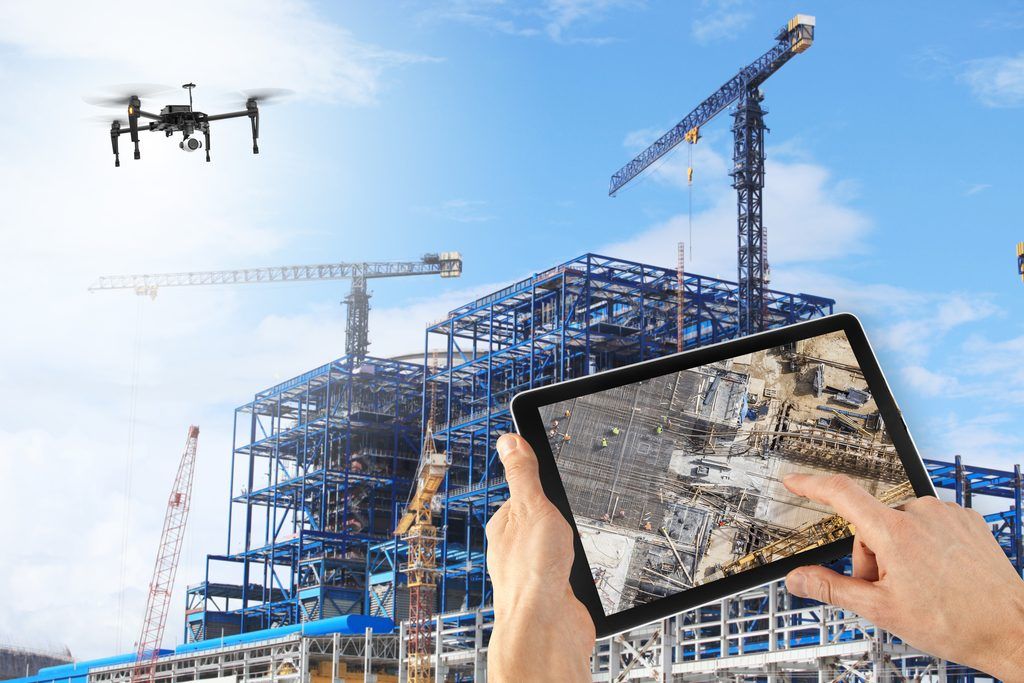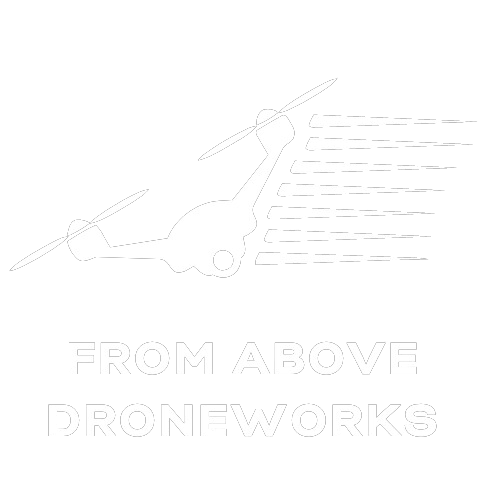Top 10 Essential OSHA Guidelines for Drone Safety on Job Sites
OSHA-Compliant Drone Safety

Welcome to the dynamic world of Unmanned Aerial Systems (UAS), or as we like to call them, drones! These high-flyers are game-changers, propelling site inspections and project monitoring to new heights. But let's not forget, with great technology comes great responsibility. That's where the Occupational Safety and Health Administration (OSHA) steps in, setting the stage for us to harness the full potential of our drones safely. So, let's navigate the skies of regulation together with this clear-cut guide on the top OSHA must-dos for your projects.
Overview of OSHA Drone Requirements
Importance of OSHA Drone Requirements
Ever since we started sending our drones buzzing across job sites, the perspective on safety and compliance shifted—it had to. OSHA's rules are like the guardrails on our path to innovation. They're here to dial down the risks of drone operations—think of the unexpected mid-air mishaps or ground-level glitches. Sticking to these protections doesn't only keep our crew and gear safe; it defends against legal headaches and hefty fines. And let's be honest, a safe site is a smooth-running site. For professionals in construction, real estate, and infrastructure inspection, following these standards is not just a legal obligation but a critical component of operational integrity.
10 Key OSHA Guidelines for Drones
Benefits of Compliance
Sticking to OSHA's drone dos and don'ts isn't just about avoiding trouble; it's about excelling. It's the wind beneath your wings, lifting standards while grounding risks. When you tick all the compliance boxes, you're building a fortress of trust with your teams, clients, and the community. It's about carving out a reputation as safe as the drones are high.
For drone service providers, compliance can be a key differentiator, attracting clients who prioritize safety and reliability. Additionally, proper documentation and adherence to OSHA standards can simplify audits and inspections, reducing the likelihood of fines and legal complications. Overall, following OSHA drone requirements contributes to efficient, safe, and reputable workplace drone operations.
Ensuring Safety and Compliance: Protective Measures for Drone Operators
Critical to the success of any drone operation is a strong commitment to safety, particularly on job sites where the stakes are exceptionally high. To skillfully manage these hazards, let's look at how to layer on safety like a pro.
Essential Gear for Operators: The Safety Ensemble
Think of Personal Protective Equipment (PPE) as your trusty sidekick in the world of drone flights. It's not just about ticking off a checklist; it's about nurturing a mindset where safety is second nature. Here's the gear you'll want to suit up in:
- Safety Glasses: Keep your eyes shielded from any airborne particles that could come your way.
- Protective Gloves: These are essential for getting a grip on your gear, literally and figuratively.
- High-Visibility Jacket: It's not just a fashion statement; it ensures you're visible to everyone on-site.
- Ear Protection: Drown out the noise on the ground to stay focused in the air.
- Solid Boots: They're like the foundation for a house—essential for stability on varied terrains.
Embracing PPE is about more than just following rules. It's about actively protecting yourself and setting a tone of conscientious, prepared operations that align beautifully with OSHA's rigorous expectations.
Drone Inspections Pre-Takeoff: Checking It Twice
Before your drone's rotors whirl into action, a thorough pre-flight check is your first order of business. It’s non-negotiable for safe skies!
- Inspect the Drone's Health: It’s like a mini-physical—look for any cracks or signs of potential trouble.
- Power Check: Make sure your drone's battery isn't just ready but has enough oomph for the trip.
- System Diagnostics: From controls to GPS, give everything a quick but careful once-over.
- Survey the Scene: Eyes on the ground and in the sky—ensure no obstacles could turn into potential headaches.
Nail these checks and you're not just meeting standards; you're proactively crafting a flight that's smooth from start to finish, guarding against unnecessary bumps along the way.
Emergency Procedures for Drones and Incident Reporting
Even with best practices in place, hiccups can happen. That's why having rock-solid emergency procedures is critical:
- For a Lost Signal or Glitch: Every pilot needs to know their drone's "plan B" for a safe landing.
- Avoiding Aerial Accidents: Quick, what's the drill if another object comes too close? Know the moves to minimize any risk.
- Keep Records Meticulous: If something does go south, document it with the precision of a historian—every detail can help you fly smarter next time.
It's all about habitual preparedness. Drill these responses until they're second nature, ensuring that every flight is as safe and secure as it can be. This not only checks the OSHA compliance box but also strengthens the backbone of your drone operations.
Committing to Mastery: Training and Certifications
Continual training isn't just a bonus; it’s a cornerstone of operational excellence and safety:
- FAA Part 107 Certification: Think of this as your drone pilot's license, covering all the must-knows from regulations to reading the skies.
- Ongoing Learning: Staying on top of the latest safety protocols and tech trends isn't just smart; it's essential.
Engaging in hands-on training experiences not only hones your team's skills but also deepens your collective ability to respond to anything the flight path throws your way. Embrace a culture of continuous learning, and watch as both safety and operational savvy take flight.
When you weave these practices into your drone activities, you're elevating your work above the baseline of OSHA’s standards. You're not just flying drones; you're pioneering a legacy of top-tier safety and excellence in the industry. Fly safe, fly smart, and let's keep setting that bar high!
A Parting Flight
We're all in this together—elevating our work with drones while keeping our boots firmly on the ground of safety. OSHA's guidelines are our co-pilots in this journey, guiding us through regulations to reach new heights of excellence. By valuing these principles, we're not merely abiding by the rules—we're crafting a legacy of secure, cutting-edge operations.
So, let's take these narratives—our little victories and hard-earned lessons—and let them steer us towards a brighter, safer future in the skyward sectors we serve. After all, it's through sharing and caring that we all climb higher.
And remember, those references below? They're like your GPS for the nitty-gritty of OSHA drone requirements. Use them, and chart a course to unfailing flying finesse. Keep soaring, keep safe!
References
- FAA Part 107 Certification Requirements: Ensuring that drone operators are certified under FAA Part 107 is a fundamental aspect of safe drone operations. More information can be found on the Federal Aviation Administration (FAA) website.
- OSHA Drone Safety Guidelines: Detailed guidelines regarding drone safety and compliance can be accessed through the Occupational Safety and Health Administration (OSHA).
- PPE for Drone Operators: OSHA's requirements and recommendations for personal protective equipment (PPE) can be reviewed on their official page about Personal Protective Equipment.
- Pre-Flight Drone Inspections: Information on the necessary checks and procedures before drone flights is provided by the FAA Pre-Flight Checklist.
- Emergency Procedures and Incident Reporting: OSHA’s guidelines on emergency procedures and incident reporting for drones are documented in the Guide to Safe Drone Operations.
- Training and Certification Programs: Educational resources and certification programs for drone operators are outlined by the FAA Training Programs.
- Documentation and Record-Keeping: Best practices for maintaining records and documentation related to drone operations are detailed in the OSHA Record-Keeping Requirements.
- Compliance Benefits: The benefits of following OSHA compliance, including enhanced safety and efficiency, are discussed extensively in the OSHA Compliance Assistance Quick Start.
By adhering to these authoritative sources and guidelines, professionals can ensure that their drone operations comply with OSHA requirements, thus fostering a safer and more efficient work environment. From Above Droneworks

